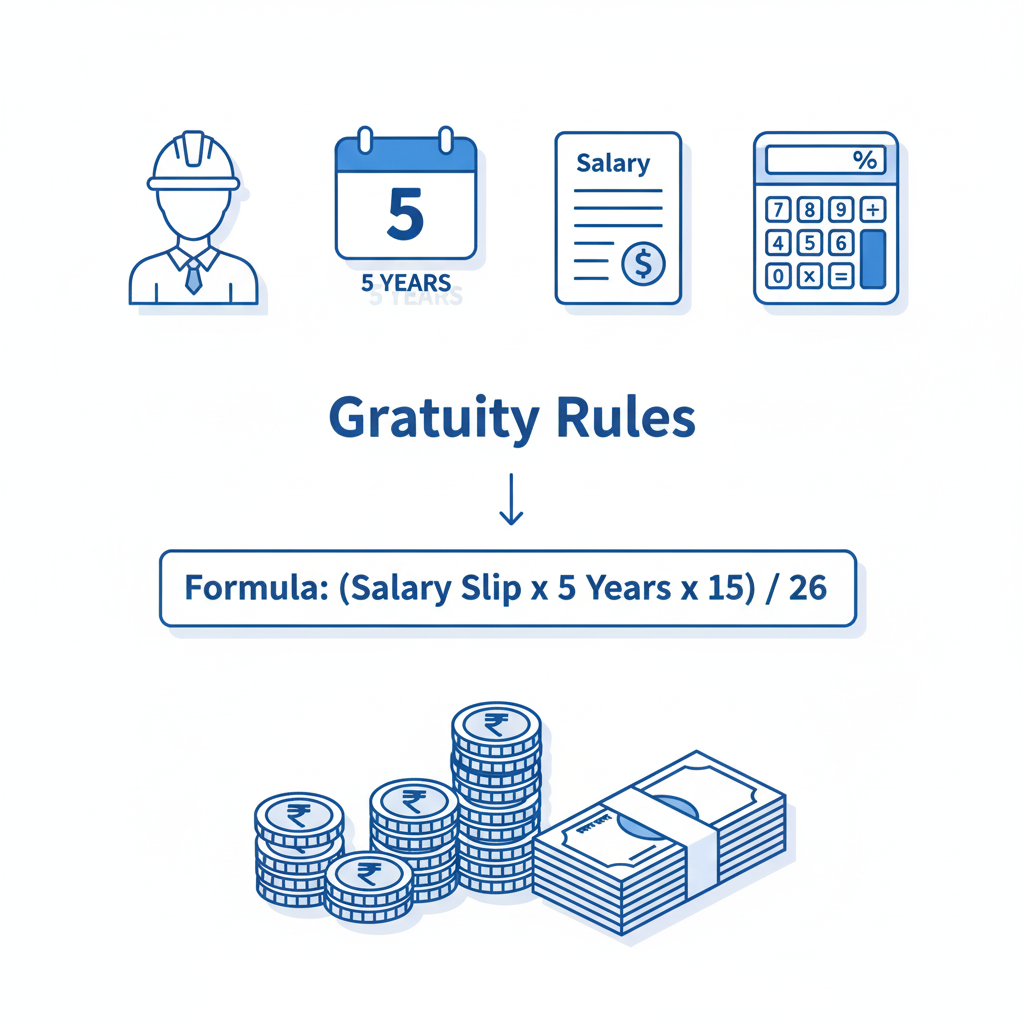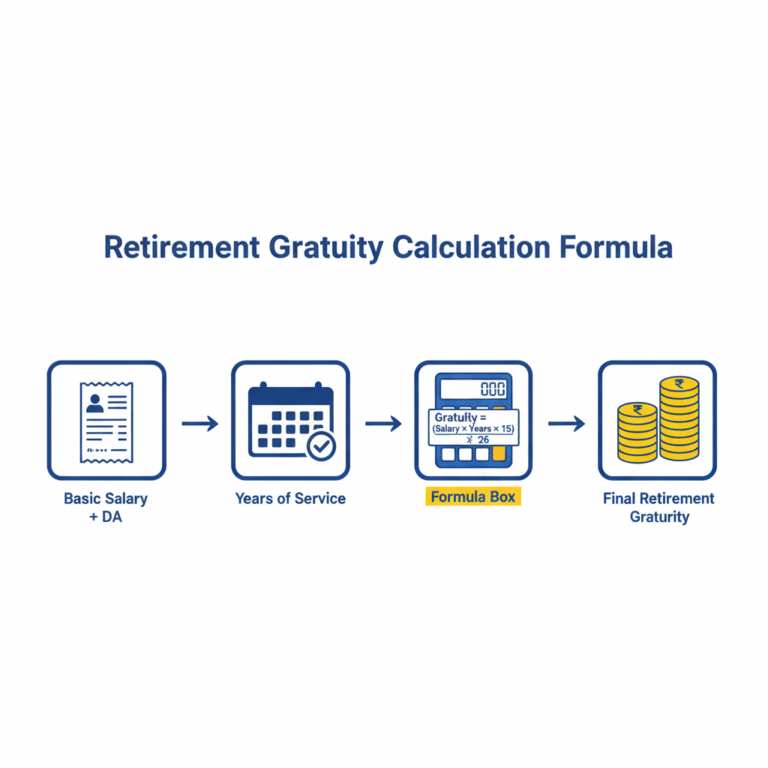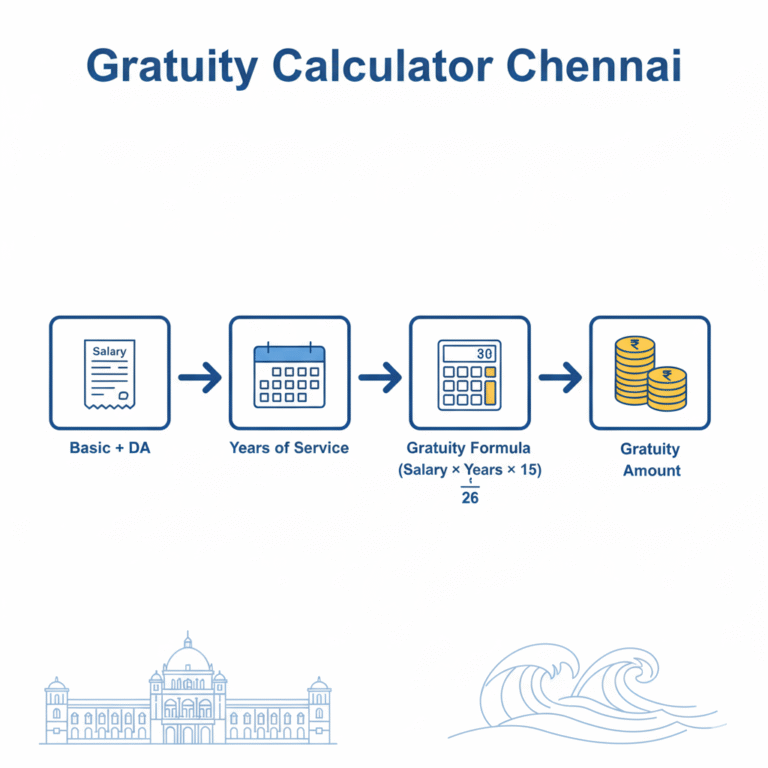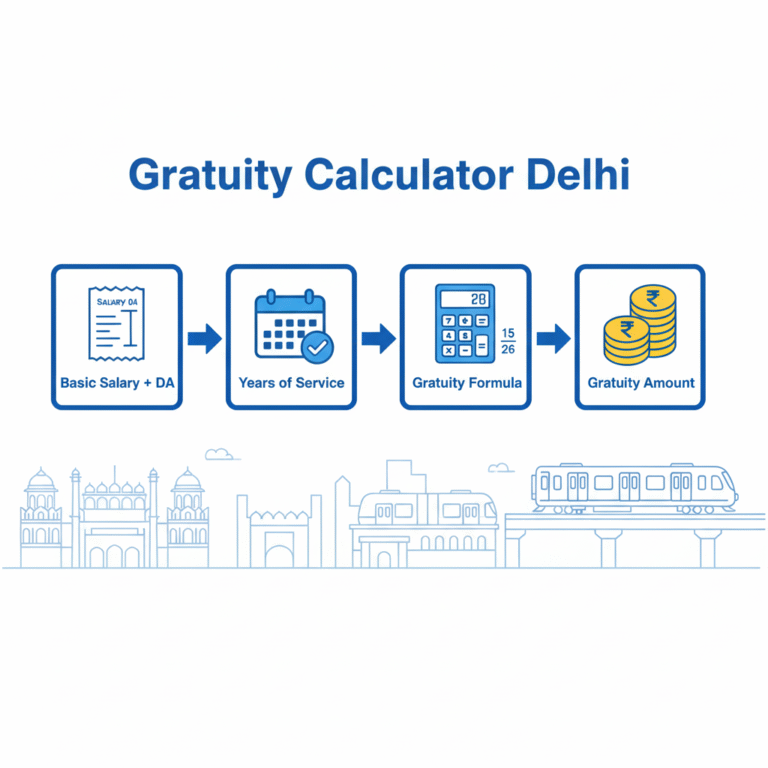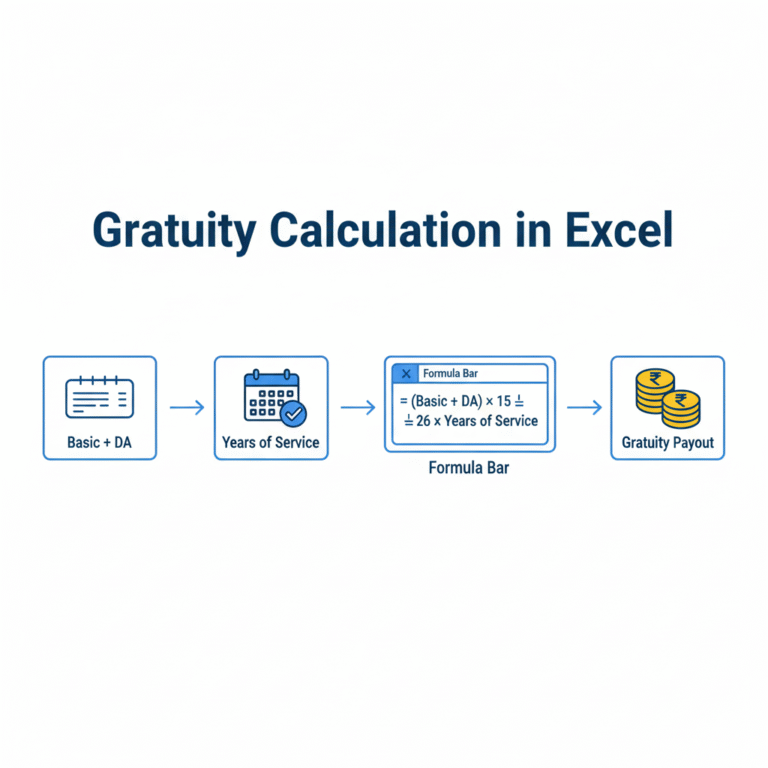Gratuity Calculation Rule – Complete Guide for Employees
Introduction
Employee benefits form a crucial part of compensation, and gratuity is among the most significant statutory entitlements available to workers in many countries. Often misunderstood or overlooked, gratuity is not just a monetary reward but also a recognition of long-term service and loyalty. The gratuity calculation rule determines how much an employee is entitled to receive when leaving an organisation after a defined period.
Understanding the rules surrounding gratuity calculation is essential for both employees and employers. For employees, it ensures awareness of their legal rights, while for employers, it safeguards compliance with labour regulations. This article explores the concept in detail, offering a complete breakdown of eligibility conditions, calculation formulas, legal frameworks, and recent updates so that readers gain an accurate and actionable understanding of gratuity benefits.
What Is Gratuity and Why Does It Matter?
Gratuity is a statutory benefit paid by employers to employees as a gesture of appreciation for long and continuous service. Unlike regular salary or wages, gratuity is typically received at the time of retirement, resignation, termination (under certain conditions), or upon the employee’s death or disability.
It is regulated under specific labour laws—such as the Payment of Gratuity Act, 1972 in India—and is intended to serve as a form of social security for employees after years of contribution to the company’s growth.
From an employee’s perspective, gratuity represents financial stability and a recognition of loyalty. For employers, it is an obligation that also reflects the organisation’s ethical responsibility towards its workforce.
Legal Framework Governing Gratuity
The Payment of Gratuity Act, 1972 forms the foundation of gratuity laws in India, but similar frameworks exist globally under different labour codes. The Act specifies eligibility, computation, and conditions under which gratuity must be paid.
Some of the core principles include:
- Applicability of the Act: It covers organisations with at least 10 employees, including factories, mines, oilfields, plantations, ports, railways, and other establishments.
- Eligibility: Employees must complete at least five years of continuous service to qualify, though exceptions apply in cases of death or permanent disability.
- Enforcement: Employers are legally bound to make gratuity payments within 30 days of the amount becoming due.
The Act also provides clarity on disputes, calculation methods, and exemptions, ensuring both parties are protected.
Eligibility Criteria for Gratuity
Eligibility is central to gratuity benefits. Generally, the following conditions apply:
- Minimum Service Requirement: Employees must complete five years of continuous service in the same organisation. Continuous service implies uninterrupted tenure, though authorised leave, illness, maternity leave, or accidents do not break continuity.
- Employment Status: Permanent employees are covered. Apprentices may not qualify under gratuity provisions, depending on jurisdiction.
- Events Triggering Payment:
- Retirement after reaching the stipulated age
- Voluntary resignation after qualifying service
- Termination (except for misconduct)
- Death of the employee (gratuity is paid to nominees or legal heirs)
- Permanent disability
Understanding these conditions is crucial for employees to claim their rightful benefits.
Gratuity Calculation Rule: The Formula
The heart of gratuity benefits lies in the calculation formula. The general rule under the Payment of Gratuity Act is:
Gratuity = (Last Drawn Salary × 15 × Number of Completed Years of Service) ÷ 26
- Last Drawn Salary: Includes basic salary and dearness allowance (DA), but not bonuses or allowances like HRA or overtime.
- 15 Days’ Salary: Represents 15 days’ wages for each completed year of service.
- 26: Denotes the average number of working days in a month, used for standardisation.
For example, if an employee’s last drawn salary (basic + DA) is ₹30,000 and they have worked for 20 years:
Gratuity = (30,000 × 15 × 20) ÷ 26 = ₹3,46,154 (approx).
This formula ensures fairness and proportionality based on tenure and pay scale.
Different Scenarios of Gratuity Calculation
Case 1: When Employer Is Covered Under the Act
Employees working in establishments covered by the Gratuity Act use the standard formula mentioned above.
Case 2: When Employer Is Not Covered Under the Act
If the employer is not legally bound under the Act, a slightly different formula applies:
Gratuity = (Last Drawn Salary × 15 × Number of Completed Years of Service) ÷ 30
Here, 30 is used instead of 26, slightly reducing the amount payable.
Case 3: Death or Disability of Employee
In cases of death or permanent disability, the five-year minimum service condition is waived. Gratuity is paid regardless of tenure, with limits prescribed under law.
Factors That Influence Gratuity Calculation
Several factors impact the final gratuity amount:
- Tenure of Service: Longer service naturally increases entitlement.
- Last Drawn Salary: Since gratuity is linked to the most recent salary, increments and promotions directly impact the amount.
- Employer’s Coverage: Whether the establishment is covered under the Gratuity Act determines the calculation formula.
- Government Notifications: Periodic updates or amendments may alter maximum limits. For example, the ceiling has been revised over time (₹10 lakh → ₹20 lakh).
Understanding these nuances helps employees plan better and avoid disputes.
Tax Implications of Gratuity
Gratuity also has tax-related considerations:
- For government employees, gratuity is fully exempt from income tax.
- For private-sector employees, gratuity is exempt up to ₹20 lakh under current laws, subject to conditions.
- Any excess amount above the exemption limit becomes taxable.
Employers are responsible for deducting and reporting applicable taxes, while employees should consult tax advisors to optimise exemptions.
Gratuity Across Different Industries
While the law sets broad guidelines, Gratuity Calculation Rule can vary across industries. For instance:
- Manufacturing and Mining: Often see higher tenure due to long-term employment practices.
- IT and Services: Employee mobility is higher, making awareness of eligibility crucial.
- Educational Institutions: Teachers and staff are also covered under gratuity provisions.
Industry-specific policies and collective bargaining agreements may further enhance Gratuity Calculation Rule entitlements.
Common Misconceptions About Gratuity
Gratuity Calculation Rule rules are often misunderstood. Some myths include:
- Myth: Gratuity is a bonus paid every year.
Fact: Gratuity is a lump sum benefit payable only upon separation after qualifying service. - Myth: Employees can claim gratuity after just a few months.
Fact: The general rule requires at least five years of continuous service (except in death/disability cases). - Myth: Gratuity includes all allowances.
Fact: Only basic salary and DA are considered.
Clarifying these misconceptions is vital to ensure correct expectations.
Employer’s Responsibility and Compliance
Employers have a legal and ethical duty to:
- Maintain accurate employee records.
- Calculate the Gratuity Calculation Rule as per statutory rules.
- Disburse payments within 30 days.
- File necessary returns and ensure compliance.
Non-compliance can lead to penalties, interest charges, and reputational harm. Therefore, proactive adherence is in the best interest of organisations.
Employee Rights and Best Practices
Employees should:
- Be aware of their eligibility and entitlement.
- Nominate beneficiaries in case of unforeseen events.
- Verify calculations when gratuity is offered.
- Seek clarification or legal support in case of disputes.
Awareness ensures employees are not deprived of this crucial retirement benefit.
Recent Updates on Gratuity Calculation Rule
The gratuity ceiling has been periodically revised by the government to reflect inflation and salary growth. In 2018, the exemption limit was raised to ₹20 lakh, aligning benefits with evolving compensation structures.
Additionally, new labour codes may bring further simplifications and reforms, making it essential for HR professionals and employees to stay updated.
International Perspective on Gratuity
Gratuity-like systems exist worldwide, though with different names and structures:
- Middle East: End-of-service benefits are mandatory under labour laws.
- Singapore: The Retirement and Re-employment Act outlines employer obligations.
- Europe: Many nations offer severance pay schemes with similar intent.
This global perspective shows gratuity as part of a larger framework of worker protection.
Case Studies: Real-Life Application of Gratuity Calculation Rule
- Employee Retiring After 30 Years
A government employee retiring after 30 years with a last drawn salary of ₹50,000 receives Gratuity Calculation Rule close to the statutory ceiling. - Private-Sector Resignation After 6 Years
An IT professional resigning after six years with a salary of ₹40,000 qualifies for gratuity, calculated proportionately. - Unexpected Demise
In unfortunate cases of death, Gratuity Calculation Rule benefits are immediately payable to nominees, regardless of tenure.
These scenarios highlight the importance of understanding the rules clearly.
Gratuity and HR Policies
For HR departments, Gratuity Calculation Rule is more than compliance; it is a strategic tool for employee retention. Transparent policies, regular awareness sessions, and timely disbursements improve trust and engagement within organisations.
Employers who view Gratuity Calculation Rule not as a burden but as a long-term investment in employee well-being tend to enjoy stronger loyalty and reduced attrition.
FAQs on Gratuity Calculation Rule
Conclusion
The gratuity calculation rule plays a central role in protecting employees’ rights while ensuring employers fulfil their obligations. For employees, Gratuity Calculation Rule serves as a financial cushion during retirement or career transitions. For employers, compliance builds credibility and strengthens workforce relations.
By understanding the eligibility criteria, formula, influencing factors, and recent updates, both employees and employers can manage gratuity effectively. As labour laws evolve and organisations grow increasingly employee-centric, Gratuity Calculation Rule remains a timeless benefit that reflects respect, recognition, and reward for long-term service.

